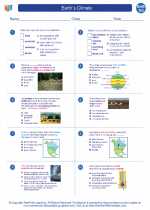Phosphorus
Phosphorus is a chemical element with the symbol P and atomic number 15. It is a non-metal that is essential for life and is found in many important biological molecules such as DNA, RNA, and ATP. Phosphorus is also an important nutrient for plant growth and is commonly used in fertilizers.
Physical Properties
- Atomic number: 15
- Atomic mass: 30.97
- Phase at room temperature: Solid
- Color: White, red, or black, depending on the form
- Boiling point: 280.5°C
- Melting point: 44.1°C
Chemical Properties
Phosphorus is highly reactive and can form compounds with many other elements. It readily combines with oxygen to form phosphorus oxides, and with hydrogen to form phosphine gas. It also forms various compounds with metals, such as calcium phosphate in bones and teeth.
Uses
Phosphorus has numerous industrial and biological applications, including:
- Manufacture of fertilizers
- Production of detergents and soaps
- Flame retardants in plastics and textiles
- Additive in steel production
- Component of matches and fireworks
Environmental Impact
Excessive phosphorus runoff from agricultural fertilizers can lead to water pollution and eutrophication of lakes and rivers. This can result in harmful algal blooms and oxygen depletion in water bodies, impacting aquatic ecosystems.
Study Guide
To study phosphorus, it's important to understand its physical and chemical properties, as well as its biological and industrial significance. Here are some key points to focus on:
- Describe the physical properties of phosphorus, including its phase at room temperature and its melting and boiling points.
- Explain the reactivity of phosphorus and its ability to form compounds with other elements.
- Discuss the biological importance of phosphorus in DNA, RNA, and ATP, and its role as a plant nutrient.
- Explore the industrial uses of phosphorus and its environmental impact.
- Consider the ethical and environmental implications of phosphorus use in agriculture and industry.
By mastering these concepts, you'll gain a comprehensive understanding of the importance of phosphorus in both biological and industrial contexts.
.◂Earth Science Worksheets and Study Guides High School. Earth`s Climate

 Worksheet/Answer key
Worksheet/Answer key
 Worksheet/Answer key
Worksheet/Answer key
 Vocabulary/Answer key
Vocabulary/Answer key
 Vocabulary/Answer key
Vocabulary/Answer key
 Vocabulary/Answer key
Vocabulary/Answer key
